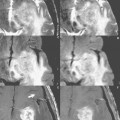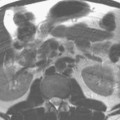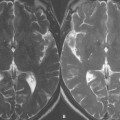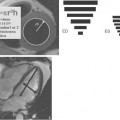88 Contrast Media: Other Agents (Non-gadolinium)
Other contrast media, not based on gadolinium, have also been developed for MRI. Superparamagnetic iron particles are selectively taken up after intravenous injection by Kupffer cells, primarily in the liver. Two such iron oxide-based agents are approved: ferumoxides (Endorem, distributed in the United States as Feridex), with a particle size range of 50 to 180 nm, and Resovist (not available in the United States), with a particle size of -60 nm. The principal relaxation effect of these large particles is on T2 (due to susceptibility effects, with the contrast agent causing a decrease in signal intensity), with scans performed in a delayed fashion postinjection, allowing time for liver uptake. Resovist is also approved for bolus injection (dynamic imaging), with T1 -weighted scans and positive contrast enhancement noted in this application. The safety profile for Feridex is not comparable with that of the gadolinium chelates, with a substantially higher incidence of adverse reactions. Resovist is more recently approved and has an improved safety profile.
In Fig. 88.1, imaging with Resovist reveals a small hypervascular lesion in Fig. 88.1A, the dynamic scan, with prominent iron uptake in Fig. 88.1B, the delayed scan (white arrow), compatible with an adenoma. In Fig. 88.2
Stay updated, free articles. Join our Telegram channel

Full access? Get Clinical Tree








